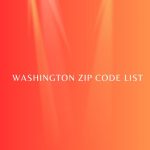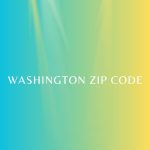Introduction
Ever wondered what those five digits at the end of an address signify? Zip codes, short for “Zone Improvement Plan” codes, are a fundamental part of our postal system, ensuring efficient mail delivery and providing valuable geographical data. In North Carolina, zip codes play a crucial role in everything from mailing letters to analyzing demographics. Let’s dive into the fascinating world of North Carolina zip codes and uncover their significance.
History of Zip Codes
Origin and Evolution
Zip codes were introduced by the United States Postal Service (USPS) in 1963 to simplify and expedite mail delivery. Before zip codes, postal zones in large cities were often confusing, leading to delays and misdirected mail. The implementation of zip codes revolutionized the system, creating a more streamlined process.
Zip Codes in the US
The introduction of zip codes was a nationwide initiative. The five-digit format we know today was designed to identify specific regions, with the first digit representing a group of U.S. states, the next two digits indicating a central region within that group, and the final two digits pinpointing a local post office.
Structure of Zip Codes
Understanding the Numbers
A typical zip code consists of five digits, but there are extended versions, known as ZIP+4 codes, which add an extra four digits for even more precise location data. The first digit covers a broad area, the next two zero in on a regional center, and the last two designate the specific post office.
How Zip Codes are Assigned
The USPS assigns zip codes based on geographic regions and population density. Urban areas, with higher population concentrations, often have more zip codes to manage the volume of mail. Conversely, rural areas cover larger spaces with fewer zip codes.
North Carolina’s Geography and Zip Codes
Overview of North Carolina’s Regions
North Carolina is diverse, with its terrain ranging from the Appalachian Mountains in the west to the Atlantic Coastal Plain in the east. This geographical diversity influences the distribution and assignment of zip codes throughout the state.
Impact of Geography on Zip Codes
The state’s varied topography means that zip codes can reflect the unique characteristics of each region. Mountainous areas may have fewer zip codes due to lower population densities, while metropolitan areas like Charlotte and Raleigh boast numerous zip codes to accommodate their residents.
Major Cities and Their Zip Codes
Charlotte
Charlotte, North Carolina’s largest city, is a major economic hub with several zip codes, including 28202, 28203, and 28204. Each code represents different neighborhoods and districts within the city.
Raleigh
The state capital, Raleigh, has zip codes like 27601, 27603, and 27604. These codes cover the downtown area and extend into the surrounding suburbs.
Greensboro
Greensboro, known for its rich history and vibrant culture, includes zip codes such as 27401, 27403, and 27405. These codes span from the city center to residential neighborhoods.
Durham
Home to Duke University, Durham’s zip codes, like 27701, 27703, and 27705, encompass both urban and suburban areas, reflecting its blend of academic and residential life.
Winston-Salem
Winston-Salem, with zip codes including 27101, 27103, and 27104, showcases a mix of historical sites and modern developments, capturing the city’s evolving landscape.
Rural vs. Urban Zip Codes
Differences in Zip Code Allocation
Urban areas typically have more zip codes due to their higher population density. Each neighborhood or district may have its own code, facilitating efficient mail delivery and service provision.
Challenges in Rural Areas
In contrast, rural areas may cover vast territories under a single zip code, posing challenges for mail delivery and emergency services. The lack of distinct zip codes can also affect data collection and resource allocation.
Zip Codes and Postal Services
Role of the USPS
The USPS plays a vital role in assigning and managing zip codes. They ensure that each code accurately represents a geographic area, facilitating efficient mail delivery and logistical planning.
How Zip Codes Affect Mail Delivery
Zip codes streamline the sorting process, allowing the USPS to deliver mail more quickly and accurately. They reduce the likelihood of misdirected mail and improve the overall efficiency of postal services.
Using Zip Codes for Demographic Information
Population Density
Zip codes are useful tools for analyzing population density. By examining the number of residents within a specific zip code, researchers can gather insights into urbanization and community development.
Economic Indicators
Economic data can also be tied to zip codes. Income levels, employment rates, and business activity are often analyzed using zip code information to understand regional economic health.
Social Statistics
Social researchers utilize zip codes to study various social indicators, such as education levels, health statistics, and crime rates. This data helps policymakers make informed decisions to improve community welfare.
Zip Codes and Real Estate
How Zip Codes Influence Property Values
Zip codes significantly impact real estate markets. Properties in desirable zip codes often command higher prices due to better amenities, schools, and community services.
Popular Zip Codes for Homebuyers
Homebuyers frequently seek properties in zip codes known for their quality of life, safety, and convenience. In North Carolina, zip codes like 27587 (Wake Forest) and 28277 (Ballantyne) are highly sought after.
Business and Zip Codes
Choosing a Business Location
Businesses carefully consider zip codes when selecting locations. Proximity to customers, suppliers, and transportation hubs can influence their choice, affecting operational efficiency and profitability.
Marketing and Zip Codes
Marketers use zip codes to target specific audiences. By understanding the demographics and preferences within a zip code, businesses can tailor their marketing strategies to reach potential customers more effectively.
Tourism and Zip Codes
Major Tourist Attractions by Zip Code
North Carolina’s tourist attractions are spread across various zip codes. For instance, zip code 28801 covers downtown Asheville, known for its vibrant arts scene and historic architecture.
Travel Planning Using Zip Codes
Travelers can use zip codes to plan their trips more efficiently. By identifying attractions, accommodations, and dining options within specific zip codes, they can create more organized and enjoyable itineraries.
Zip Code Maps and Tools
Online Resources
Numerous online tools and maps help users find zip codes. Websites like USPS.com and Zip-Codes.com offer easy-to-use search functions to locate zip codes by address or city.
How to Find a Zip Code
Finding a zip code is simple with online tools. Enter an address or city name into a zip code finder, and you’ll get the corresponding zip code, making mailing and location identification a breeze.
Future of Zip Codes
Technological Advancements
Technology continues to shape the future of zip codes. Enhanced GPS and mapping technologies may lead to more precise and dynamic zip code systems, improving accuracy and service delivery.
Possible Changes and Trends
As cities grow and populations shift, zip codes may evolve to reflect these changes. We might see new zip codes introduced or existing ones restructured to accommodate new developments and population patterns.
Common Zip Code Issues
Misrouting and Errors
Despite their efficiency, zip codes can sometimes lead to misrouting. Incorrectly entered codes or outdated information can cause delays and delivery issues, highlighting the need for accurate data entry.
Addressing Problems with the USPS
If you encounter zip code-related issues, the USPS provides customer support to resolve problems. Contacting your local post office or using online resources can help correct errors and ensure smooth mail delivery.
Conclusion
Understanding zip codes, especially in a diverse state like North Carolina, offers valuable insights into geography, demographics, and economic trends. These five-digit numbers are more than just mailing tools; they reflect the intricacies of our communities and influence various aspects of daily life. Whether you’re buying a home, starting a business, or planning a trip, knowing your zip codes can make a significant difference.
FAQs
What is the most populated zip code in North Carolina?
The most populated zip code in North Carolina is often within major cities like Charlotte or Raleigh, with specific areas like 28269 in Charlotte having a high population density.
How are zip codes determined for new developments?
Zip codes for new developments are assigned by the USPS based on the geographical area, population projections, and the need for efficient mail delivery.
Can two cities share the same zip code?
Yes, smaller or neighboring cities and towns can share the same zip code, especially if they are within the same postal delivery area.
Why do some zip codes have more digits?
The extended ZIP+4 codes provide more precise location data, helping to identify specific blocks or apartment complexes within a standard zip code area.
How can I find the zip code for a specific address?
You can find the zip code for a specific address using online tools like the USPS zip code lookup or other zip code directory websites.










